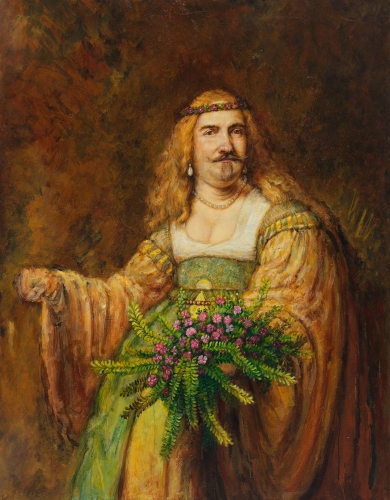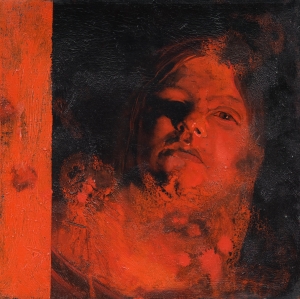Biography
Federico Guida was born in Milan in 1969. He lives and works in Milan.
Guida doesn't seek models for his portraits, he doesn't seek aesthetic beauty, but rather he endeavors to capture with skillful brushstrokes the people who surround him, the neighbor, friends, nieces: anyone who crosses his path; he freezes their images in motion as he did when traveling through Turkey as a photographer.
"Guida is a contemporary neoseicentist painter," wrote a critic, and the definition is fitting.
The production of this artist, well-known for years in the world of contemporary art and supported by a solid technical background, is characterized by a figurative language rich in personal connotations expressed through photography, oil colors, varnishes, acrylics, chalk, and fabric. In his works, in which a nuance that recalls the technique and effects typical of photography is always recognizable, Caravaggio's lessons emerge, handling rays of light like brushes, like the painters of the sixteenth and seventeenth centuries in the round forms and natural softness of flesh. Human bodies stopped on the canvas in a thousand poses by Guida ask questions and meditate on the drama of human existence. This theme is evoked with nude bodies curled up, at rest, or intertwined in struggle, feminine forms that, in the artist's most recent production, are called "stones" - rocks, boulders that are perhaps at the beginning of a path to be traveled. Federico Guida uses red and blue for the backgrounds, foreground gazes for the need to tell a higher story, for the desire to give a touch of realism to the longing and the necessity of thinking about immensity, eternity, the meaning of things. The bodies (painted in shades of red) are often tattooed: thus, painting transforms into incised, "skinned" skin, to tell tribal rituals, paths of suffering life, maps of treasures yet to be discovered. The anatomy thus scratched becomes a seismograph that records the moods of a global journey that blends Western experiences with Eastern research. The bodies then become privileged meeting places between different cultures, vibrant resonant boxes of contemporary rituals.
The painter, who in dozens and dozens of collective exhibitions and solo shows has wanted to narrate Milan nightlife, asylums, relics young and old, in his personal, unique journey, continues to refine his style by renewing himself in new subjects, always keeping the eyes of body and soul fixed on man.





